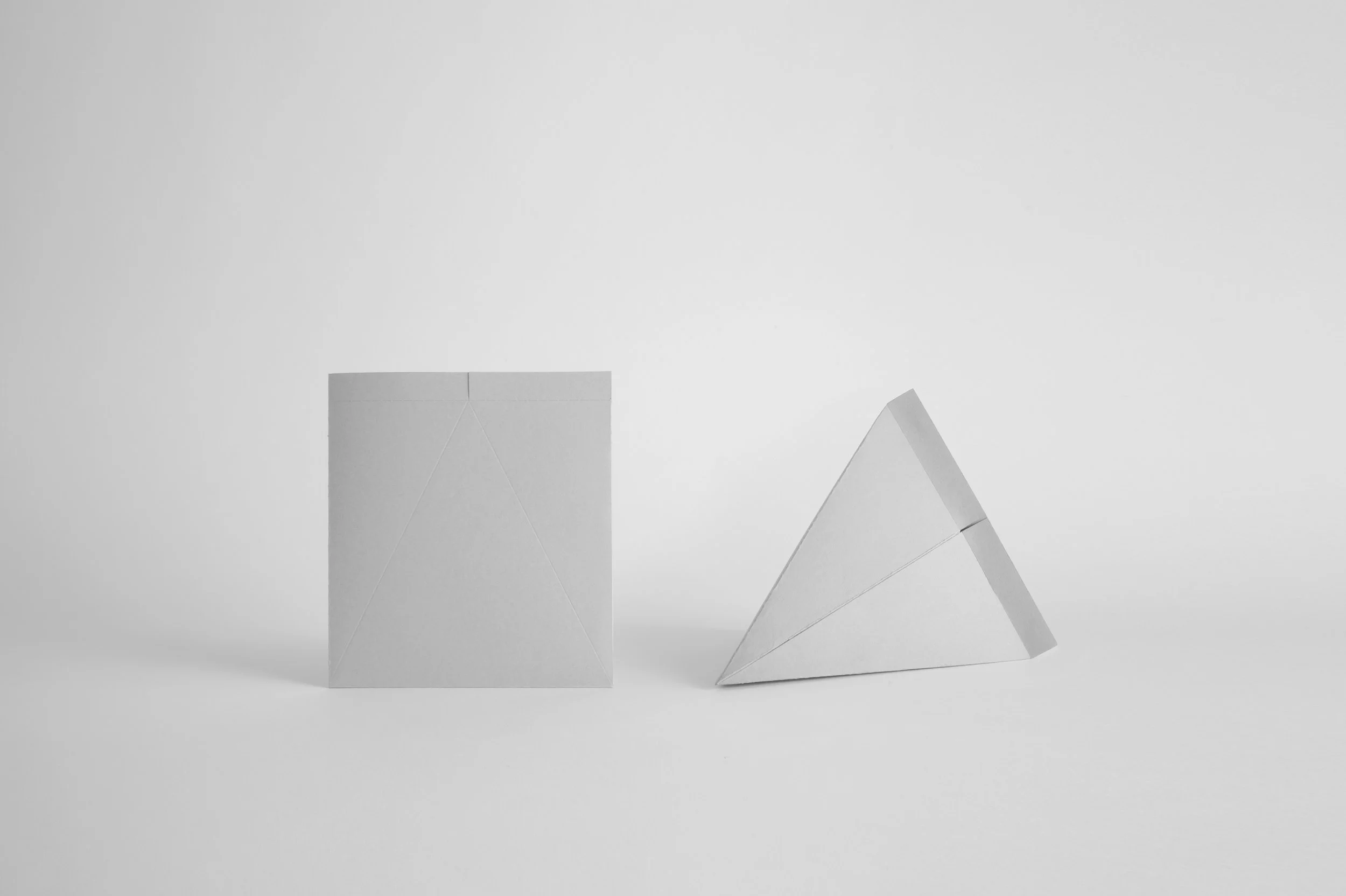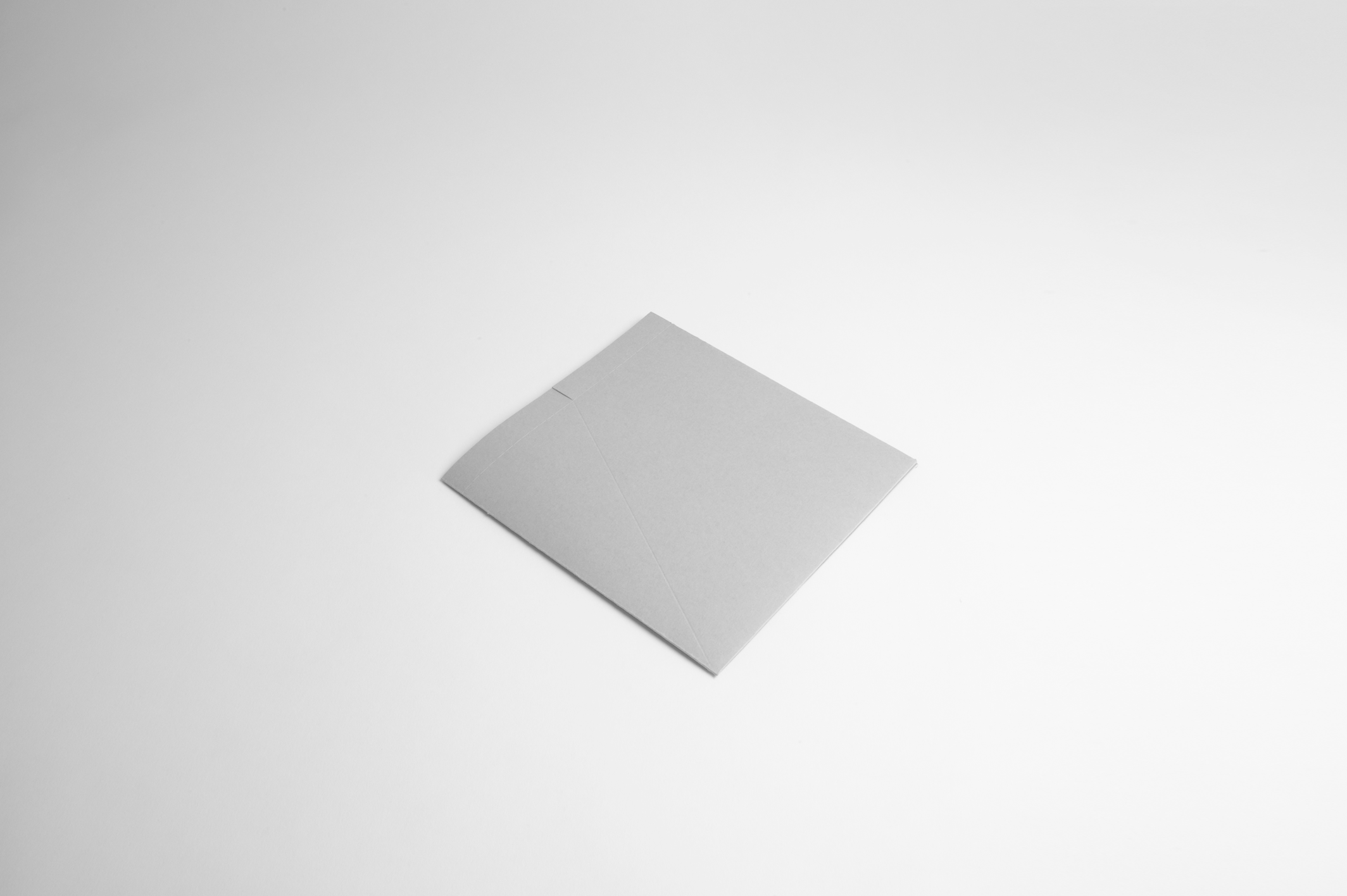Published:
June 2019
SHARING FORMS
With Study Model HF02, we established the practice’s interest in motion. A key finding was that by readjusting the motion of an archetype, new experiences and functions can be conceived. Another finding was that an archetype with motion is one that can possess more than a single state and thus, function. Study model HF02 was a form with motion that shared the states of both a brochure and a poster.
Before we continue, we need to first differentiate a static form from a movable one. We define a static form as one that does not possess any moving parts. For example, a metal spoon is a static form while a foldable camping spoon is a form with motion (refer to Fig. A). The foldable spoon therefore exists in two states —folded and unfolded. Conscious subtraction is then to consider that the functions afforded in the two states need not be the same. A camping spoon need not stay as a spoon when unfolded – its dormant function can be something else (refer to Fig. B).
Fig. A
Fig. B
Deciding on a dormant function begins with a careful study of the attributes, relationships and situations surrounding the primary function of an object, before integrating it with its associated motion. In the case of the foldable camping spoon, a portable scooping device is its primary function and swivelling is the motion that enables this portability.
The scenario of outdoor dining would then suggest other dining-related actions to be possible dormant functions that could be integrated with the motion of swivelling. A can opener could be an ideal dormant function as it allows for swift access to and consumption of the food from a can. The foldable camping spoon is then able to serve its maximum function as a portable dining device, with the different functions afforded in its two states.
Study models HF03 and 04 (refer to Fig. C) were attempts to think about dormant functions that can be programmed within an archetype, based on the primary functions they have initially been designed for.
Fig. C
Study model HF03 (refer to Fig. D) was conceived as an envelope that can transform into a box to hold three-dimensional objects when required. Proposed as part of an identity project for a 3D printing company, HF03 embodies the concept of turning things “from 2D to 3D”.
A sheet of paper is a static form. When score lines are added, the action of folding is enabled. Assembly of the sheet into a box, an envelope, etc. is then made possible.
Fig. D
An envelope is therefore a form with motion that exists in two states – sealed and unsealed. Its primary function and associated motion would therefore be sealing through folding. The consideration then was what else could be sealed, and what other forms folding could create. The outcome was HF03 (refer to Fig. E).
Fig. E
Through the re-adjustment of fold lines (primary motion) and how it seals (primary function), a flat envelope can afford a structural prism form when sealed differently. Besides embodying the brand concept of turning things “from 2D to 3D”, the envelope shared a flat form for documents (refer to Fig. F) and a raised form for printed objects (refer to Fig. G).
Fig. F
Fig. G
Similarly, HF04 (refer to Fig. H) takes an identical approach towards the primary function of containment and primary motion of folding. Designed as a giveaway for roadshows, the requirement was to be able to create a form that could contain documents and expand into a carrier that could hold larger other objects when necessary.
Fig. H
The function of expansion into a carrier is created through the motion of making a symmetrical fold. This allows the closing flaps of the folder to gain extra space when opened up (refer to Fig. I).
Fig. I
Designing with motion to us, is understanding that different forms and functions can co-exist together. At times, through the introduction of motion or by altering a given motion (readjusting motion), Hyperfunction can be achieved.
Achieving the effects of Hyperfunction through Conscious Subtraction is the practice’s approach to solving multiple problems with a single solution. This is not in an attempt to do lesser, but to produce lesser. As designers, we actualize a large number of things each year for our clients. Producing lesser while still achieving the same objective, is our way towards sustainable design. Maximizing the functionality of each object produced is essential in an environment of overconsumption.









